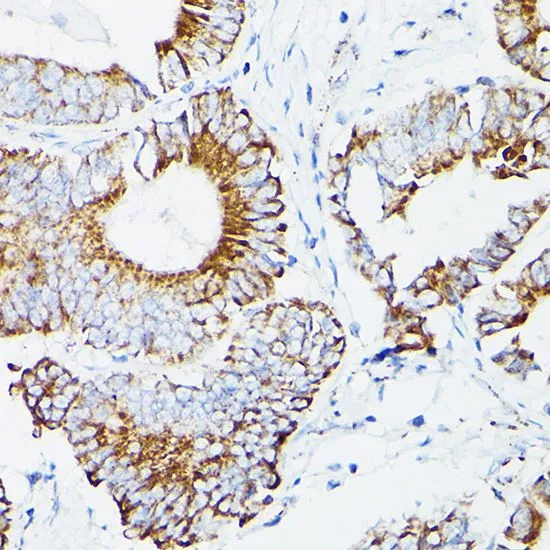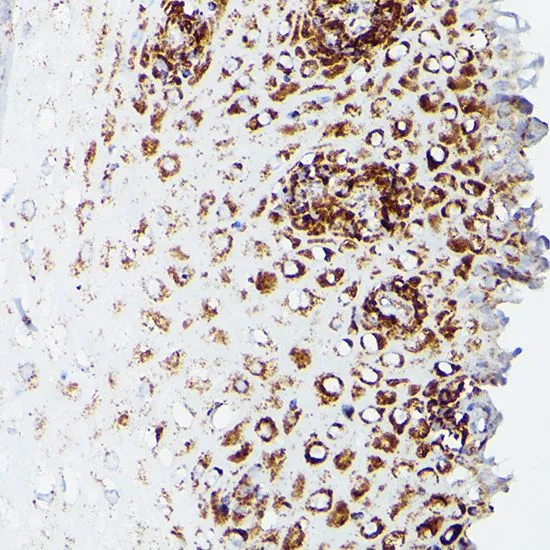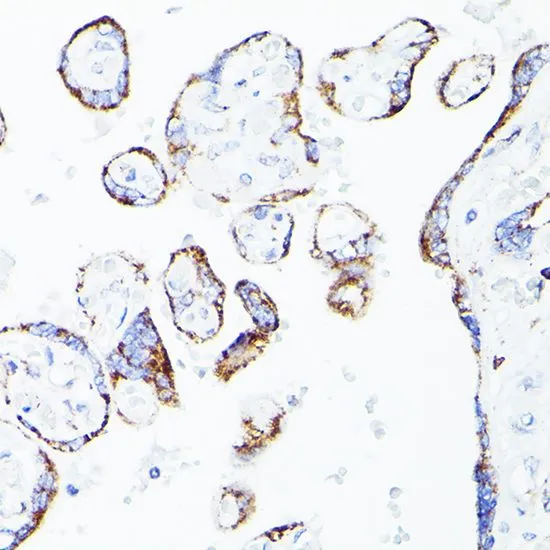
WB analysis of various sample lysates using GTX33155 DLD antibody. Dilution : 1:1000 Loading : 25microg per lane
DLD antibody
GTX33155
ApplicationsWestern Blot, ImmunoHistoChemistry, ImmunoHistoChemistry Paraffin
Product group Antibodies
ReactivityHuman, Mouse
TargetDLD
Overview
- SupplierGeneTex
- Product NameDLD antibody
- Delivery Days Customer9
- Application Supplier NoteWB: 1:500 - 1:2000. IHC-P: 1:50 - 1:200. *Optimal dilutions/concentrations should be determined by the researcher.Not tested in other applications.
- ApplicationsWestern Blot, ImmunoHistoChemistry, ImmunoHistoChemistry Paraffin
- CertificationResearch Use Only
- ClonalityPolyclonal
- ConjugateUnconjugated
- Gene ID1738
- Target nameDLD
- Target descriptiondihydrolipoamide dehydrogenase
- Target synonymsDLDD, DLDH, E3, GCSL, LAD, OGDC-E3, PHE3, dihydrolipoyl dehydrogenase, mitochondrial, E3 component of pyruvate dehydrogenase complex, 2-oxo-glutarate complex, branched chain keto acid dehydrogenase complex, diaphorase, epididymis secretory sperm binding protein, glycine cleavage system L protein, glycine cleavage system protein L, lipoamide dehydrogenase, lipoamide reductase, lipoyl dehydrogenase, pyruvate dehydrogenase complex subunit E3, 2-oxo-glutarate complex, branched chain keto acid dehydrogenase complex, glycine cleavage system protein L
- HostRabbit
- IsotypeIgG
- Protein IDP09622
- Protein NameDihydrolipoyl dehydrogenase, mitochondrial
- Scientific DescriptionThis gene encodes a member of the class-I pyridine nucleotide-disulfide oxidoreductase family. The encoded protein has been identified as a moonlighting protein based on its ability to perform mechanistically distinct functions. In homodimeric form, the encoded protein functions as a dehydrogenase and is found in several multi-enzyme complexes that regulate energy metabolism. However, as a monomer, this protein can function as a protease. Mutations in this gene have been identified in patients with E3-deficient maple syrup urine disease and lipoamide dehydrogenase deficiency. Alternative splicing results in multiple transcript variants. [provided by RefSeq, Jan 2014]
- ReactivityHuman, Mouse
- Storage Instruction-20°C or -80°C,2°C to 8°C
- UNSPSC12352203






